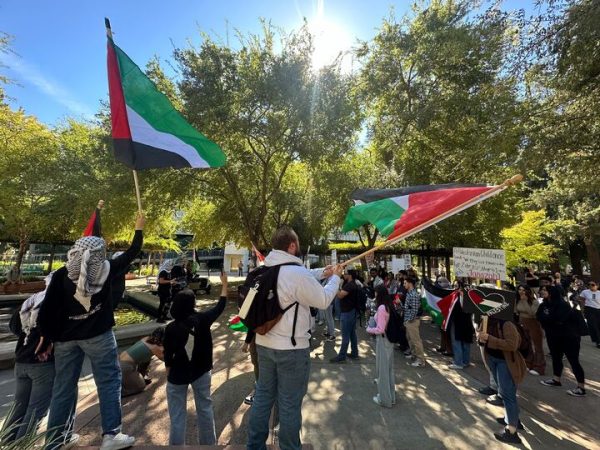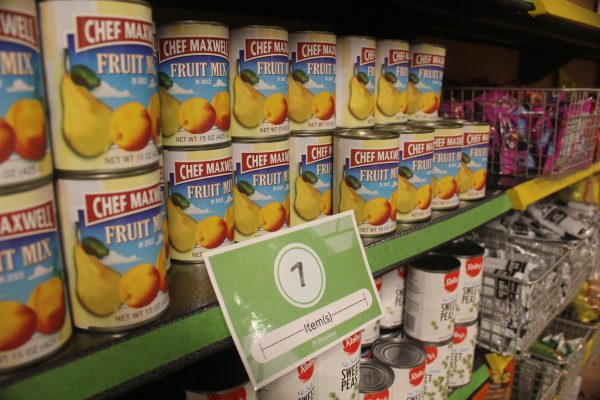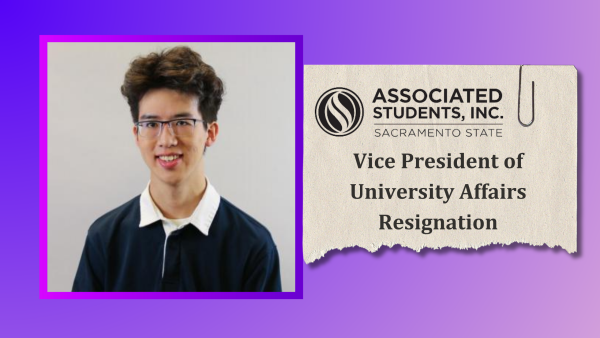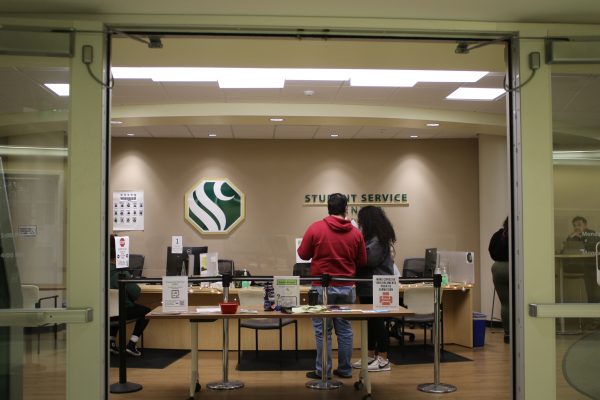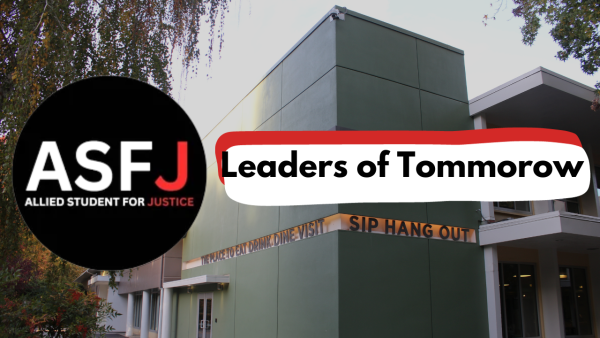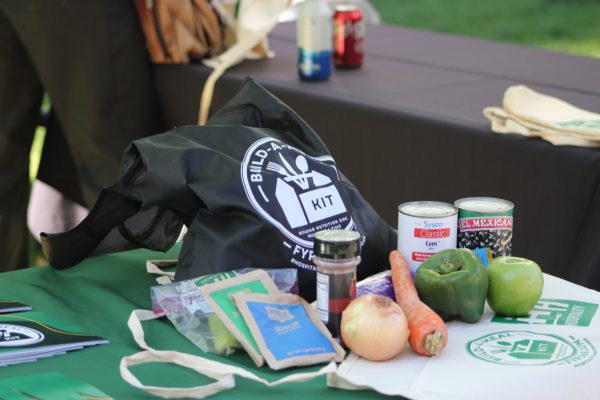Scholarships attainable for students
September 14, 2011
A grant from the National Science Foundation will enable Sacramento State to reward 38 of its students with a math and science teaching scholarship.
The Robert Noyce Teacher Scholarship Program, named after the Silicon Valley scientist who invented the integrated chip, funds colleges and universities nationwide to reward their students with paid training. The stipend’s amount varies, depending on each school’s grant proposal and budget; Sac State will award $12,000 per year of training, for up to two years.
The scholarship is available to junior, senior and credential students with a major related to science, technology, engineering or mathematics – also known as STEM fields – and have maintained a grade point average of 3.0.
Deidre Sessoms, professor of teacher education, wrote the grant the National Science Foundation accepted and helps determine who receives the scholarship. She said since Sac State started receiving funding for the scholarship in fall 2008, about 25 “Noyce Scholars” were awarded; about half of the applicants were chosen.
“By the time they finish their teaching credential program at Sac State and are in the world as teachers – by the time they get their first job – they’ll be very well prepared,” Sessoms said. “I think in this economy it’s important to realize that the Noyce Scholars are getting jobs … and when I hear back from them as I do, they’re absolutely loving the ability to make a difference in the life of a child, adolescent or teenager. They’re having a ball.”
Twenty six local professionals in the STEM fields will also be trained to become teachers and will work together with the students in several conferences, workshops and courses. Of these 64 Noyce Scholars, about 13 per year will be awarded for the next five years because of the scholarship program’s limited budget.
Biological sciences professor Kelly McDonald aided Sessoms in previous years with writing the grant proposal to the NSF and determining which students should receive the scholarship. This year, she begins her position as program director for the Noyce scholarship at Sac State.
“In addition to just doing their coursework, and doing internships in the classroom, we have a wide variety of professional development opportunities for them throughout the semester,” McDonald said.
According to the scholarship’s website, nsfnoyce.org, the award is a response to the “critical need for K-12 teachers of science, technology, engineering and mathematics,” particularly in “high-needs” districts.
The NSF defines a high-needs district as having at least one school with a high rate of teacher resignation, free and reduced student lunch eligibility or teachers who do not have a degree in the subject matter they teach.
Of the 13 public school districts in the Sacramento area, “virtually all of them qualify as being high-need,” Sessoms said.
“It’s hard to find a district that doesn’t qualify for it, even in the entire state,” she said.
Julia Smith, a Sac State teaching credential student, earned her bachelor’s degree in biological sciences in May. She received the Robert Noyce Scholarship in fall 2010, and is still in training to become a science teacher.
“Not only is the support helpful for paying tuition, but the enthusiasm of the teacher mentors has been such a great inspiration to me to continue going for what I set out to do,” Smith said. “Most teachers don’t go into the profession knowing these resources and tips you get (from the program). I would definitely encourage them to go for it.”
Among Smith’s favorite lessons during the scholarship was
one on the importance of safety in a lab setting.
“I went to a workshop where the presenter put on goggles and we threw a plate of shaving cream at his face. He took off the goggles and sure enough his eyes were fine,” Smith said.
“You know, just practical, visual means to help the students understand how important safety is in the classroom.”
Smith said the most challenging part of being a Noyce Scholar is determining which of the many tips, resources and concepts she has gathered she would enjoy using the most.
“I loved just getting to have that opportunity to go and meet other teachers who are already in the field and ask them all these questions of what it’s going to be like,” Smith said. “I feel like a kid in a candy shop – getting all this information and being encouraged to go into teaching.”
All applicants for the scholarship have diverse backgrounds and experience, McDonald said, yet the commitment and passion to teach is the most important quality she and Sessoms look for when selecting award recipients.
“Noyce Scholars … are really passionate about math and science. We ask them, ‘Why do you want to teach math or science?’ The first thing you get is, ‘Because I love it and I really want students to understand why it’s so much fun and so exciting,'” Sessoms said. “That’s what we look for first: that they’re passionate about their subject matter and about helping young people to appreciate and enjoy it as well.”
Having direct experience and knowledge in the education field is also crucial to receiving the Noyce Scholarship, McDonald said.
“(We) want to see that they’ve explored the profession to some degree so they know what they’re getting into. You can hear the news of all the challenges (teachers) have had, but until you’re actually in the classroom, you might not realize how you’re going to react to those challenges,”
McDonald said. “We want to make sure they’re realistic about the jobs they’re going into, and a lot of the rest of it is just training.”
When Smith applied for the scholarship, she hoped for the best and expected the worst.
“I had a lot of support from the teachers on campus, both in the education and biological sciences departments, saying that I should go for the scholarship and that I would get it,” Smith said, “but I also wanted to be realistic and know that there are other, incredible future teachers out there who were just as likely to get it as I was.”
McDonald, who teaches future biology teachers in a graduate class, said having knowledgeable and passionate teachers is vital for the high-needs districts to make educational and financial recovery.
“I love working with (these) pre-teachers. I believe that everybody deserves a chance at a good education, but you got to have good teachers,” McDonald said. “They heard about the pink slips being handed out all over the place, they know they’re going to work twice as hard as anyone else making the same salary, they know they’re going to have struggles. But they’re there anyway. These guys are passionate and great to work with.”
When she completes the scholarship in May 2012, Smith will have one more semester of student teaching left before earning her teaching credentials. For that semester, she will likely be located to the San Juan or Elk Grove Unified school districts to aid instructors, she said.
Smith said she plans to continue practicing everything she learned in the program and stay in contact with those that have mentored her. She strongly recommended the Robert Noyce Scholarship to other students interested in teaching in the STEM fields and thanked Sessoms and McDonald “for being so fantastic in all the work that they’ve done.”
“It’d be really neat if they can receive recognition for that, because this scholarship program wouldn’t function without them,” Smith said.
Micah Stevenson can be reached at [email protected]
Eligibility for the Robert Noyce Teacher Scholarship Program
- Students must be currently enrolled, with full-time student status.
- Available only to junior, senior and credential students.
- Students must have a major that relates to science, technology, engineering or mathematics.
- Students must have maintained a 3.0 grade point average.
































































































































